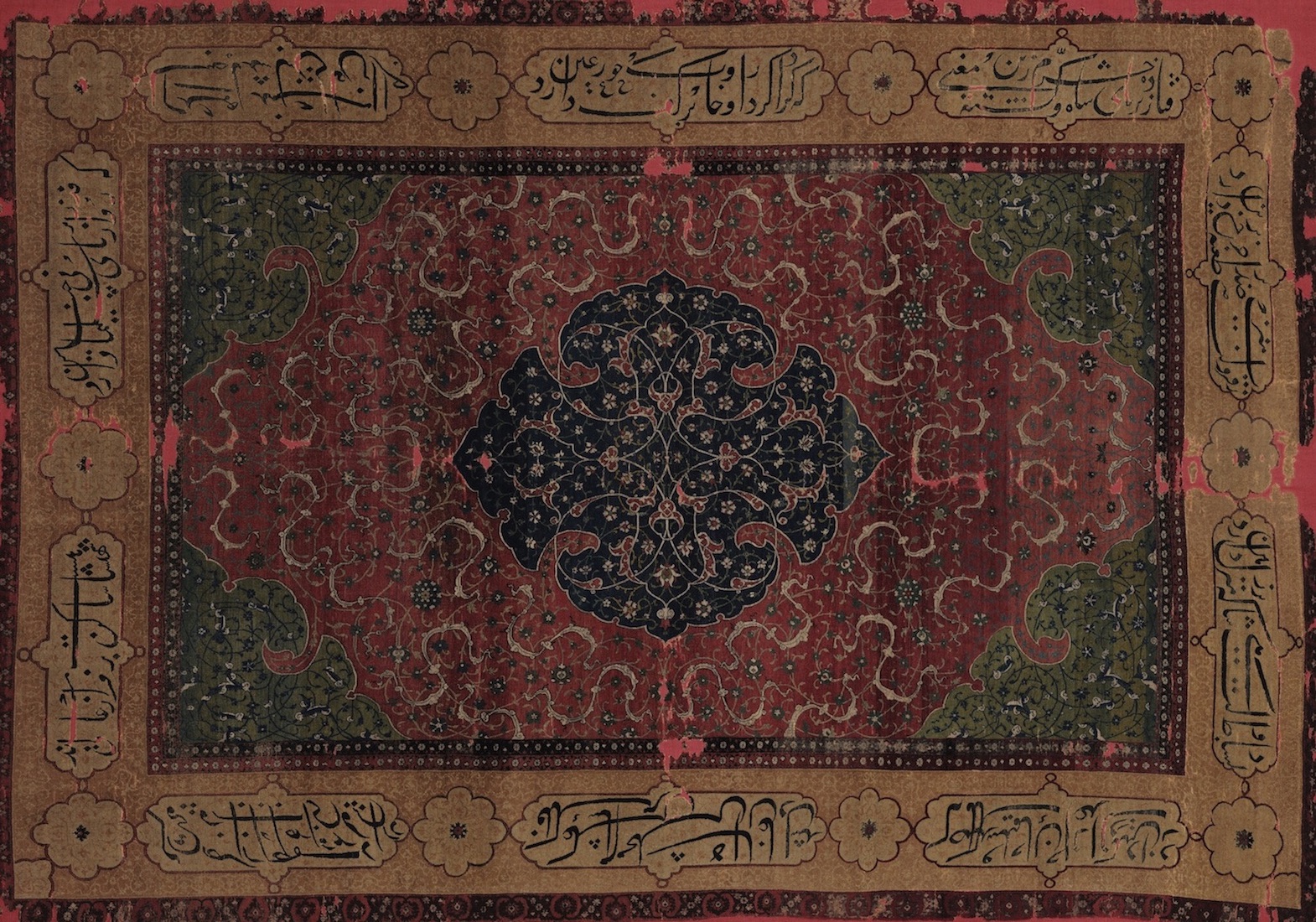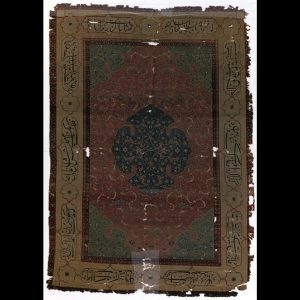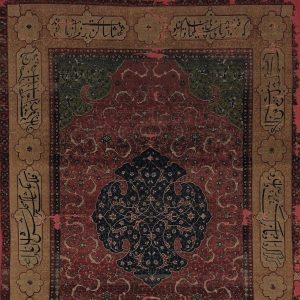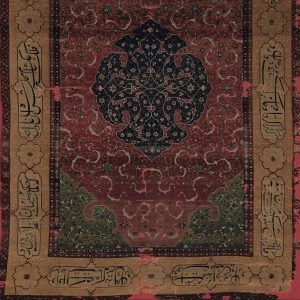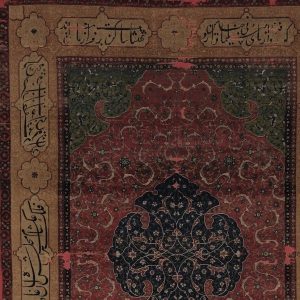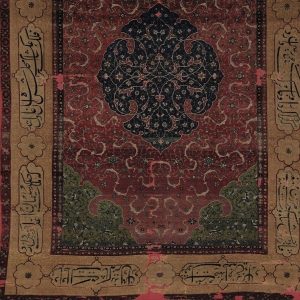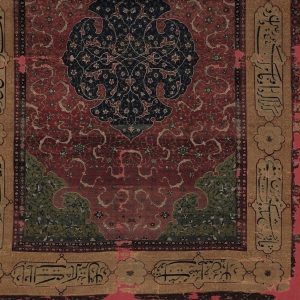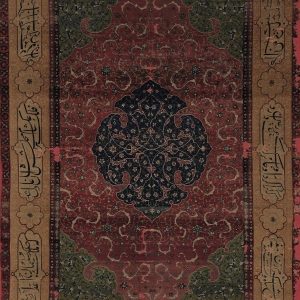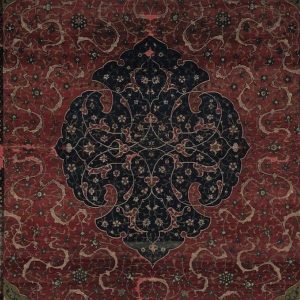“Salting” Rug:
Author: Unknown
Origin: Iran
Dating: 16th-17th century (Safavid Dynasty)
Material: Wool, Silk & Silver Metallic Thread
Dimensions (cm): 244 x 174
Inv. no.: PD0076
Displayed between September & December
The central field is composed of a central blue medallion and green quarter brackets over a red background filled with Chinese clouds shaped like a ‘tchi’. In the main border, with a beige background, multi-lobed medallions alternate with rectangular cartouches, which have phrases from a Persian poem which describes it as ‘a carpet of Royal fortune, which resides in the earth (…) under the kings’ (Solomon) feet’.
Since this is a rug made of wool, the exceptionally high density of the knots is noteworthy (11.155 knots per dm2). This is a number similar to that of a carpet exclusively made of silk – as is the case of the impressive ‘Kashans’ Carpet – as well as representing a doubling of the density of the famous and emblematic Ardabil carpet belonging to the Victoria and Albert Museum (London).
The ‘Salting’ Rugs
In September 2007, two Specialists in Islamic rugs (Michael Franses and John Mills) identified three ‘Salting’ carpets in the Ducal Palace. Their presence in Portugal happened after a Parisian Antiques Collector, Armand Deroyan, had told them he recognised the carpets when he visited Guimarães some years previously. The ‘Saltings’ are currently among the most expensive and desired carpets by Collectors from all over the world. These pieces are the largest set to be documented outside of the Topkapi Palace in Istanbul.
These rugs were acquired, among a number of other objects, in the context of a Restructuring Programme of the Palace by the Department of Monuments – The Commission for the Acquisition of Furniture – in the late 1950’s. All three of the carpets were bought from the prominent Mrs. Perez, a Textile Dealer in London, who had previously been involved in the sale of important rugs from Portuguese Collections to the International Market.
The designation ‘Salting’ derives from the name of the famous Australian Art Collector, George Salting (1835-1909), the same Collector who, in 1909, donated a particularly emblematic piece to the Victoria and Albert Museum in London.
The volume of the intertwining structure, created through the warp, weft and knots, determines the level of detail that the Weaver can achieve. Fibres with a smaller diameter facilitate the execution of the more complex patterns; this is the reason why in carpets of high quality, the silk thread is frequently used in the warp, weft and knots. The horizontal and vertical lines are easily executed in the octagonal net created by the warp and weft in the loom, unlike what happens when curvilinear motifs are required. In that case, a greater density of knots is necessary (more than 3500 knots per dm2) to avoid ‘squared’ effects, which justifies the frequent use of silk fibres in the warp (and at times in the weft) in rugs made of wool.
The rugs found in the Ducal Palace of the Bragança represent the most important discovery in Portugal since 1911, when José de Figueiredo found the magnificent carpet of ‘animals and trees’ in the Madre de Deus Convent, in Xabregas and is now considered the ‘crown jewel’ of the Textile Collection in the National Museum of Ancient Art (Lisboa). The intense investigation being pursued in the study and conservation of the three ‘Salting’ carpets has guaranteed its preservation for future generations. After finally having their previous status of important objects of the Islamic Art, restored, the carpets are worthy of respect and admiration as National Treasures.
Raquel Santos e Jessica Hallett
